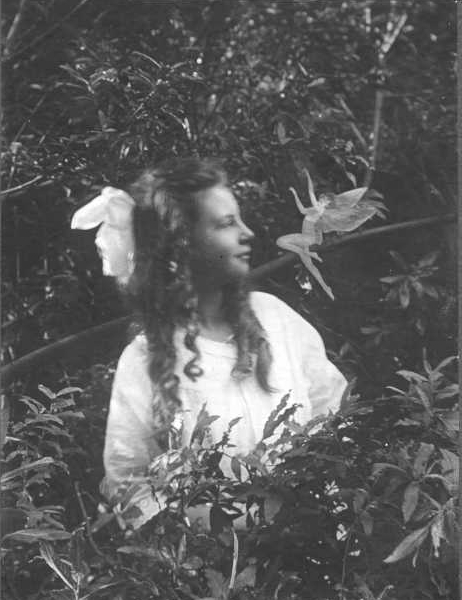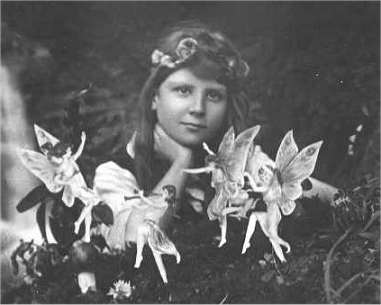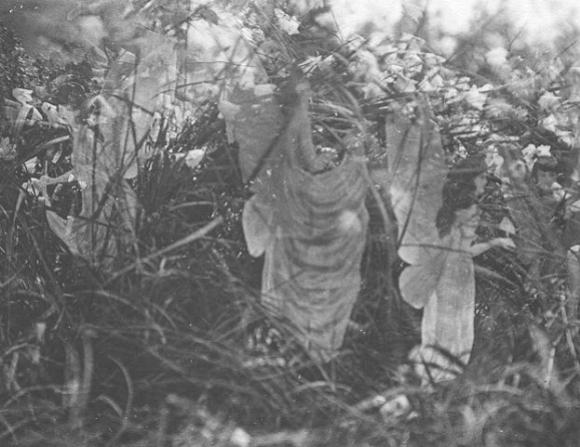
One hundred years ago, two young cousins took a camera down to a stream in northern England and came back with a controversy that lingered almost magically in the air for decades. Five photographs taken by the girls appeared to show them engaging with fairies, the mythical small, graceful female creatures with wings.
This might seem like a prank that—no matter how well-executed—would be only briefly considered before being decisively and permanently dismissed. Not in this case. Sir Arthur Conan Doyle, one of the most popular authors of his (or any other) time due to his detective Sherlock Holmes, wrote about the fairies: “The recognition of their existence will jolt the material twentieth century mind out of its heavy ruts in the mud, and will make it admit that there is a glamour and mystery to life.” Experts examined the photos and toured the site. (One clairvoyant who visited the scene “saw them [fairies] everywhere”.) The world, it seemed, wanted to know more.

Media including the British Broadcasting Corp. interviewed the photographer cousins, Elsie Wright and Frances Griffiths, in the 1960s, ‘70s, and ‘80s. Eighty years after the girls’ photo shoot, two movies were made about the events, and they were not cheap productions: one featured Harvey Keitel and Peter O’Toole, and another Ben Kingsley.
Why did the Cottingley Fairies photos—which were actually of cardboard cutouts—impress so mightily? The relatively recent novelty of photography fueled curiosity, according to the Wikipedia article about the photos. Doyle consulted experts at Kodak, which helped to popularize photography when it introduced the Brownie box camera in 1900. The photos were enhanced and transported around the United Kingdom by their admirers on lecture tours. “Spirit photography” was becoming a fad, and Doyle posed for a double-exposure photo with a supposed ghost in 1922. (Doyle’s friend and later foe, Harry Houdini, mocked the fad and created a photo of himself with the supposed ghost of Abraham Lincoln as part of his debunking of spiritualism.)

In 1983, 66 years after their prank went viral, Elsie and Frances admitted they copied illustrations of dancing girls from a children’s book and drew wings on them. They posed with the cardboard cutouts, producing the fairy effect.
But even then Frances insisted that one of the photos—which shows only misty images of the fairy figures without the girls—was real. “It was a wet Saturday afternoon and we were just mooching about with our cameras and Elsie had nothing prepared. I saw these fairies building up in the grasses and just aimed the camera and took a photograph.”
Elsie at times said the fairy figures were figments of her imagination that was able to photograph. The photographers themselves had a hard time letting go of the fairies, despite some discomfort that came with their faked photos fame.
In 1985 Elsie said that she and Frances were too embarrassed to admit the truth after fooling Doyle. “Two village kids and a brilliant man like Conan Doyle—well, we could only keep quiet.” In the same interview Frances said: “I never even thought of it as being a fraud—it was just Elsie and I having a bit of fun and I can’t understand to this day why they were taken in—they wanted to be taken in.”
Jeff Elder, Digital Communications Manager
Wikimedia Foundation

Can you help us translate this article?
In order for this article to reach as many people as possible we would like your help. Can you translate this article to get the message out?
Start translation